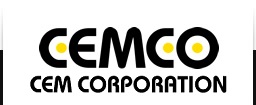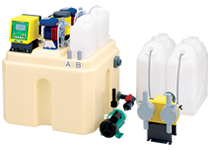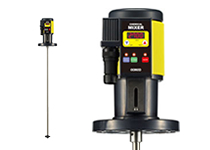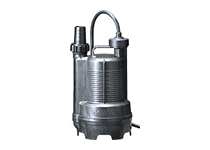Specialized manufacturer of water quality related apparatuses such as pH meter, pH Neutralizer.
- HOME
- English_TOP
- Neutralizing apparatus(for neutralize pH and waste-water treatment)
- Medical neutralization apparatus
Dramatic space saving and weight reduction are realized.
Small sterilization neutralizer for medical use
 |
Sterilization neutralization of wastewater from washing of biochemical analyzers and other equipment.
|
|
Advantages
| ・ It is possible to change the sodium hypochlorite in the sterilization to the optional concentration. |
| ・ Special pumps are used for transfer pumps. The patient is reassured that there is no risk of leakage. |
| ・ It is also easy to check the amount of wastewater that has been treated with a flowmeter. |
| ・ Adopt plastic cases with superior waterproofing and durability. |
| ・ Low-noise design that takes indoor use into account. Equipment cover is also provided. |
| ・ Prepare two control points, acid and alkali, and one point control type, acid and alkali. |
| ・ Calibration of pH 4.01 and pH 6.86 was automatically calibrated by one-touch. |
| ・ A sophisticated appearance that does not appear to be a wastewater treatment plant. |
Applications
| ・ Washing effluent from a biochemical analyzer. |
| ・ Washing effluent from the dialyzer. |
Specifications
| Model | MPH-1 | MPH-2 |
| Throughput | 100~200L/h | |
| Raw water pH | pH 2. 5-7.0 or 7.0-11.5 | pH 2.5~11.5 |
| Method of administering |
One-point control of acid or alkali Injection of sodium hypochlorite |
Two-point control of acids and alkalis Injection of sodium hypochlorite |
| Neutralization tank | 100 L of polyethylene | |
| Chemical solution tank |
Acid or alkali: 1 4 L polyethylene unit Sodium hypochlorite: 1 |
Acid and alkali: Two 4-liter units made of polyethylene Sodium hypochlorite: 1 |
| Chemical pump | Electromagnetic quantitative pump 20W/100V 65 ml per min 1 unit |
Electromagnetic quantitative pump 20W/100V 65 ml per min 2 unit |
| Stirrer | 45W/100V | |
| Inflow and drain outlet | 25A screw-in | |
Catalogue
 |
 |






